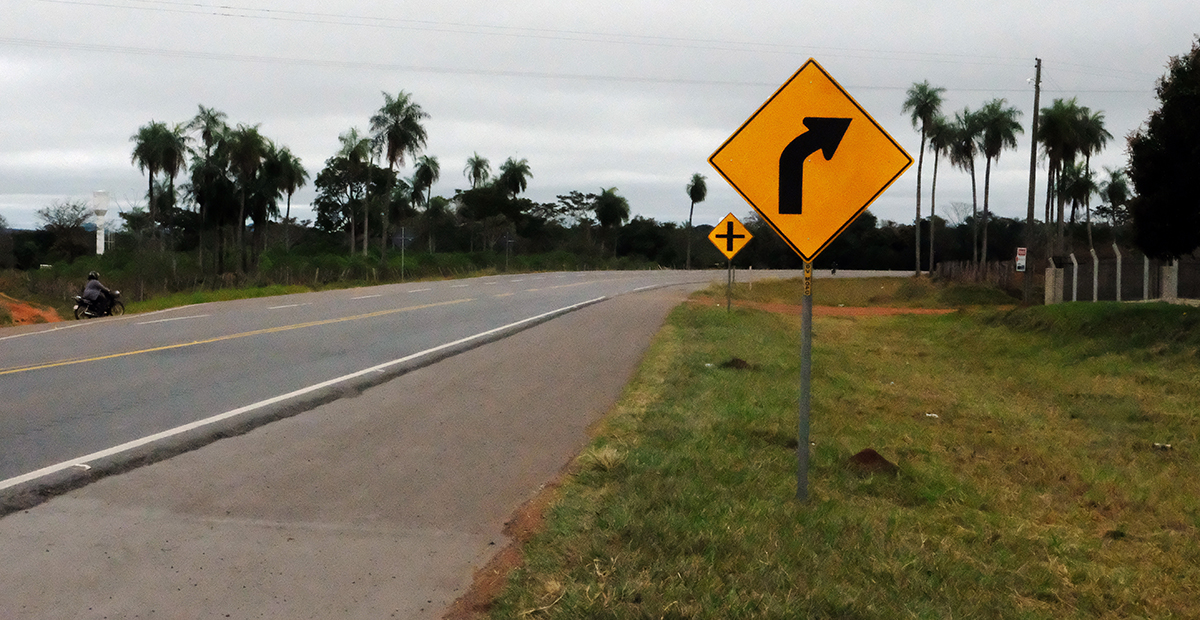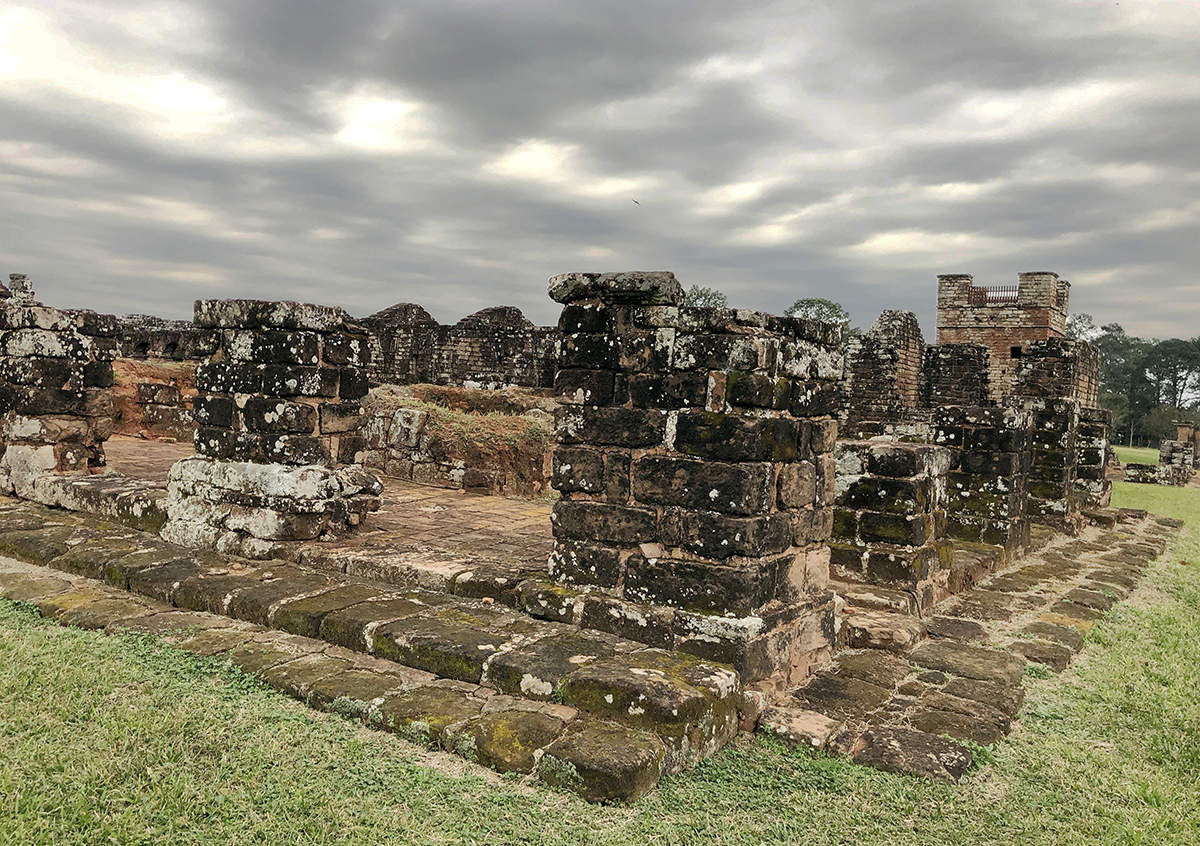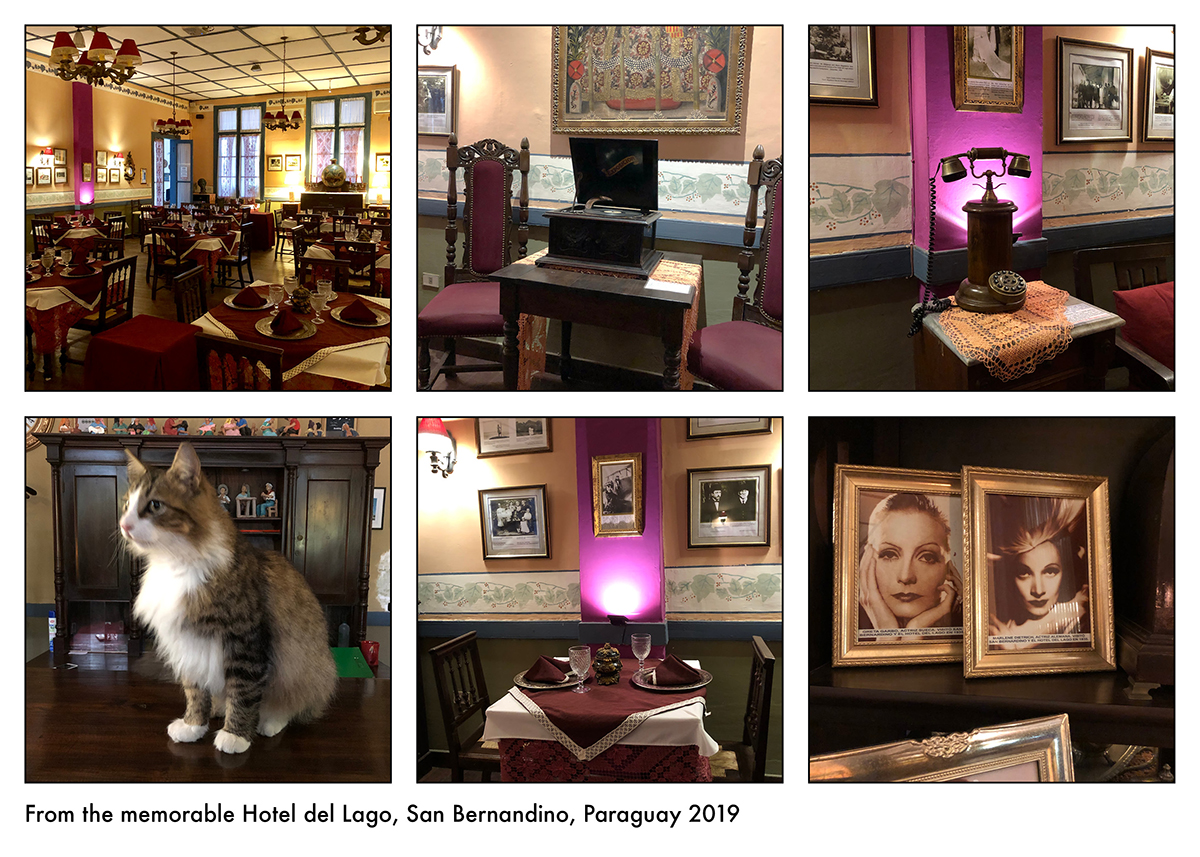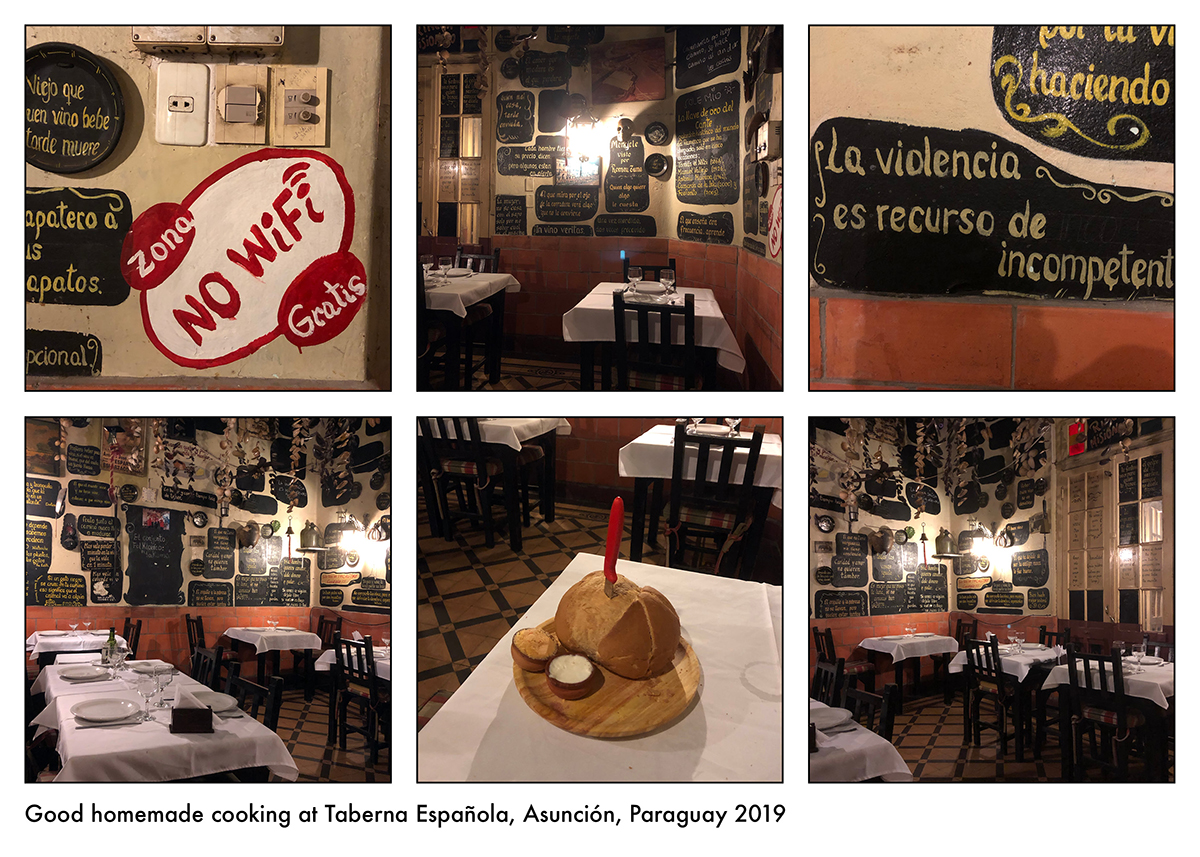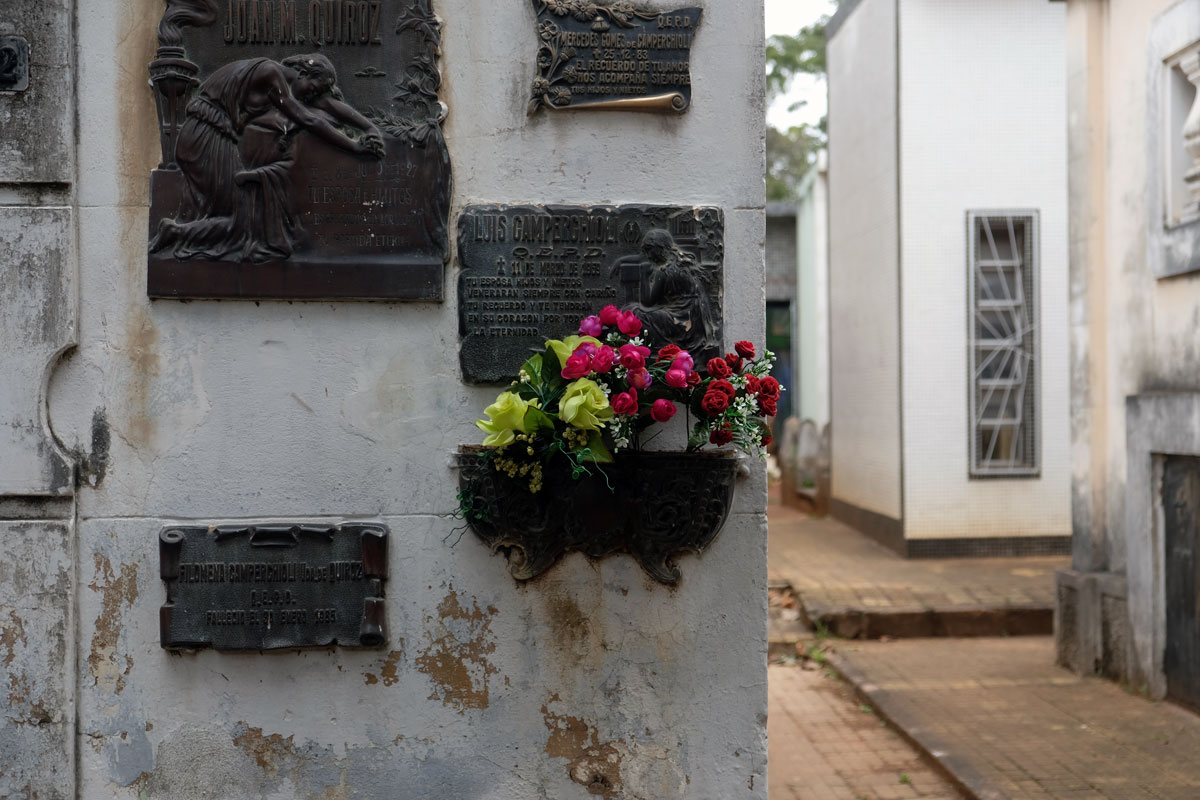My Own Private Road Trip
Driving through Paraguay – a little visited country
I got up at the crack of dawn on a Monday morning to cross the border at Ciudad del Este to pick up my Chevy. The sun was again shining from a clear blue sky, and I was all set for my own private Paraguayan road trip. As I drove along, the clear sky gave way to more clouds and finally raindrops were falling on my head. When driving I was told by other travellers on travel blogs to use my seat belts and have my lights on. And if stopped: be friendly and not understand Spanish. ¡No comprendo!
The first day’s destination was the Jesuit Missions of La Santísima Trinidad de Paraná and Jesús de Tavarangue in the small town of Trinidad, a mere four hours of slow driving. The ruins of these Jesuit missions are the only UNESCO World Heritage Site in Paraguay.
These missions are considered some of the most impressive creations of the religious work of the Jesuits and are testimony to the historical richness of the country. They were founded by the Jesuit missionaries during the colonization in the 17th century and developed for 150 years. They are also a reminder of the Jesuits' Christianisation of the Río de la Plata basin in the 17th and 18th centuries, driving out the local Guaranis. The area also has a strong German influence, and it is rumoured that the Nazi war criminal Josef Mengele lived in hiding in the nearby town of Hohenau between 1959 and 1960.
I had the ruins more or less to myself. A guide asked for the ticket, but once inside, the old Jesuit ruins was all mine. This absence of other visitors was one of my reasons for coming to Paraguay. Surrounded by more popular neighbours — Brazil, Argentina, even Bolivia — it is one of South America’s most overlooked countries. And I guess, accompanied by rain showers and thunder and lightning kept potential visitors away.
The next morning, I am the only guest in the breakfast room at 7:30. The lady serving breakfast in this cosy little hotel in the small town of San Juan Bautista in central Paraguay is going out of her way to please me. My Spanish is limited to the thirty odd word that I remember from my evening classes 53 years ago, but she brings out an egg and waves her arm to indicate if I want scrambled eggs. I say “si” and scrambled eggs I get. The television set on the wall tells me that the weather today will be a maximum of 13 degrees and a 100 percent probability of precipitation. That means a rainy day like yesterday.
As I walked around the town (population 18,000) shortly after arriving yesterday afternoon, I spotted two “elderly” guys standing in the doorway of what looked like a warehouse. As I approached them for a photograph, they stood still smiling, but the guys who looked the oldest was blabbering about Putin while the other one laughed. In the end he figured out I was from North Korea and called me Kim. I guess they don’t see many camera clicking travellers around here, and definitely not during winter time.
My next leg is a short 180 km drive to another small town called San Bernandino.
Weather forecasts aren’t always to be trusted. The forecasted precipitation of yesterday did not materialize, save for a little drizzle now and then. The clouds hang low, however, making the scenery rather grey and dull. The aggressive driving and high speed of most drivers here kept me concentrating on keeping the vehicle steady and not succumb to any speed that would earn me a ticket.
About half an hour out of San Juan Bautista I was stopped in a traffic control. After surrendering my driving license for inspection and uttering “no habla español”, the officer came back to me with a google translation (in Norwegian) on his smart phone that explained I had been driving without the headlights on, which even during the day is a violation of the Paraguayan traffic regulations and liable to fine of 47,800 guaranis. A sensible rule considering the number of traffic accidents in this country. I accepted, but after conferring with his colleague he came back with another explanation, this time also in a google version. They had “double checked” and arrived at the conclusion that the violation was worth 250,000 guaranis — without a receipt (or a voting ticket as Google called it). In order to trade back my driving license, I had no option than to fork out the highly inflated fine of a quarter of a million of the local currencies. I hope indeed they will enjoy a couple of cervezas in the afternoon after finishing a hard day’s work. Courtesy of Mr. Walderhaug.
I am literary staying in the President Suite at the Del Lago Hotel in San Bernandino, Paraguay. The hotel, that was built in 1888 and still looks like it did back then, has rooms named after famous Paraguayans. Cecilio Báez has given name to my room and he was president of this country twice, according to information provided by a framed poster outside my room. He was a journalist, historian, writer, and politician.
It was restored to its former glory 13 years ago, and according to an article in the Paraguayan newspaper La Nación the present manager claims they managed to recover the style contributed by German immigrants of the nineteenth century. Entering the reception, you are transported back to the end of the 1890-ies, and it exhales a mixture of legend and history. Further in, the dining room reveals Viennese objects and furniture and brings you back to stories told that you may not know.
The Hotel del Lago, in San Bernardino, one of the most emblematic of Paraguay, exhales a halo of mystery, a mixture of legend and history. Just enter the reception to transport one until the late nineteenth and early twentieth centuries, defoliate stories that many do not know. From the Urutaú dining room you can see a range of photographs of illustrious visitors who once stepped on the hotel, as well as Viennese objects and furniture. And for the record; Greta Garbo and Marlene Dietrich was here in 1935.
After a week of pasta and pizza I was ready for some proper food. Restaurante Oktoberfest in San Bernandino had some good “reviews” on the Google map, and I thought I would give it a try as it was around the corner from my hotel.
When first entering I was not sure if I had come to someone’s dining room. A family of five were sitting around a table and responded to me in German when I uttered the word restaurant with a question mark. No waiters in sight, so I guessed I had to wait.
Finally, with the help of the family, a young waitress appeared. The menu was in Spanish and German, naturally. I ordered a Bavarian platter; Bratwurst with hamburger, meatloaf, and French (?) fries. To go with that, a bottle of cold Paulaner.
On my table came a wurst, modest in size I would say, but it could possibly make Conchita succulent. The juicy wurst almost melted in my mouth, but the hamburger was a bit on the dry side. The meatloaf? Well, I’d do anything for love. The French fries did not taste home made, but after all I’m in a German restaurant in Paraguay. A bit of mustard did the trick. I was tempted to go for an Appfel Strudel for dessert, but I’m too conscious of overeating so I withstood the temptation. All in all, not too bad for 70,000 guaranies (around 11 dollars), including the pint of Paulaner. On a scale from one to six: three.
While people in Europe are preparing to finish off their work for the week, it’s still early Friday morning here in Asunción. I’m in the breakfast room of Asunción Palace Hotel, a fairly large room with a high ceiling and naked walls painted in beige. In some ways, I feel I’m being set back in time — with the city looking old and a bit run down. People, at least the older generation, still dress decently and they are polite and friendly. The big panorama windows bring the traffic and how people go about their daily lives into the room.
Last night, safely sheltered under a newly purchased umbrella, I found my way to Taberna Española — just a few blocks away and up some steep stairs to the second level. At 7 pm, I’m the first guest in what I may call a colourful “local”. A small room decorated with quotes and slogans painted in yellow on black background. As Paraguay is infamous for harbouring Nazi war criminals, ironically the skull of Joseph Mengele was hanging on the wall accompanied by lively South American flamenco over the speaker. A closer look reveals that this is a sculpture by some artist called Romeu Zuma, and supposedly is a political comment. The waiter was a very friendly older guy with a moustache, his grey hair combed backwards and with a charming small belly to suit the vest. Enthusiastically he brought some hot, freshly baked mega bun, with butter and cheese. As I spoke only a few words of Spanish he tried his best with a few words of English. I ordered a cerveza and he came with a beer. Very tasty one too. For the main course he recommended Cordero al chilindrón (62,000), without my google translator I had to wait until I was back in my room to know what I ate. It was three chunks of boiled lamb in brown sauce and with a hard-boiled egg and rice to go with it. It was good homemade cooking.
Asunción has its own version of the famous cemetery in Buenos Aires called Recoleta, although on a smaller scale. This is also called Recoleta, named after the neighbourhood around five kilometres from the city centre. This is a graveyard with grandeur tombstones, if you can call them tombstones. Many of them look more like houses with doors and locks. A far cry from the more modest resting place of my mother and father back home.
The Buenos Aires version has famous “residents” like Eva Person and several Nobel Prize winners. I don’t know about this cemetery, as I am not aware of many Paraguayan that are famous outside their own country. While aerial views of the one in Buenos Aires reveals a giant town of mansion like burial vaults, the one here in Asunción can be whisked through in less than half an hour. It does reveal though, that there are families with huge fortunes with fairly sized mausoleums that are well kept. Others are in disrepair, that particularly goes for the poor man section, where you can buy a shelf for your loved ones instead of a whole mausoleum. And when someone in the family loose interest in keeping it up, some mausoleums are up for sale.
The cemetery is a quiet place. There are only a handful of elderly people walking around, some seem to be attending to graves, other use it for a leisurely walk.
As I walked through the cold streets of Asunción on this Saturday morning, on my way to the cathedral, I couldn’t avoid noticing the number of homeless people sleeping on the street or on a bench in one of the many parks. More than 30 percent of the population lives in poverty, according to the central bank, and Paraguay ranks near the bottom among South American countries in reducing poverty over the last decade, according to the United Nations. Social spending for antipoverty projects is minimal, largely because taxation is lacking. Along the streets I also noticed the number of derelict buildings, now standing only as witnesses to a forgotten and past glory. Next to cathedral, close to the river, is the beginning of what looked like a small shanty town with a lot of stray dogs.
The next morning, as I am about to leave for the airport, I cannot help noticing how quiet this city is, despite its population of a million and a half. Asunción almost looks like a sleepy Swedish small town on a Sunday morning in comparison.
[July 2019]

